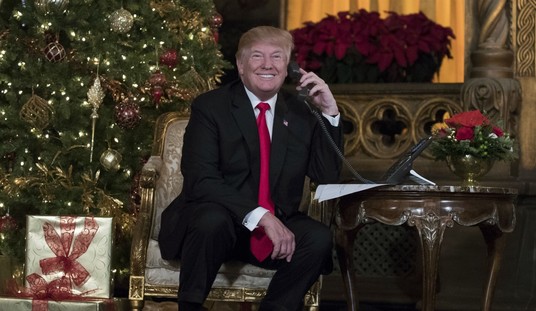
During her acceptance for the Academy Award for Best Actress, Frances McDormand ended her speech by alluding to a previously obscure legal option in effect in Dream Land. After lauding women in general, and having female nominees stand for additional applause (because let’s face it, celebrities suffer from a lack of adulation), McDormand closed with the words — “inclusion rider”.
In short, an Inclusion Rider” is a lightly-known contract stipulation that states a celebrity can demand the cast and crew reflect diversity through gender and/or ethnic distribution. It is something the people in town with real juice — the mega celebrities, directors and producers — would be most likely to enforce.
The question: Will this “solution” lead to improvements, or will it cause more problems?
As it turns out, while the studio complex is all abuzz over this contractual option, what becomes apparent is few in the industry actually have a functional grasp on this legal concept.
Need To Sign The Contract To Know What Is In The Contract
After Oscar night Matt Damon and Ben Affleck made a strong bid at virtue-signaling. The two actors endured their share of bad press from their former mentor Harvey Weinstein’s sex scandal. They declared their production company — Pearl Street Films — would be employing inclusion riders. This is clearly a bit of PR messaging, since very few in Hollywood are even aware what these riders entail.
The genesis of this new construct originates with Stacy L. Smith, PhD, and Kalpana Kotagal, an attorney covering civil rights-employment. Smith is Director of the Media, Diversity, And Social Change Initiative, from USC Annenberg. She explained in a 2014 editorial they studied films released and saw women woefully underrepresented. Smith explains, in one example, that in speaking to movie executives they used “masculine words” to describe successful directors more often than “feminine words”. (“Authoritative” was deemed a masculine word; “Nurturing” by turn was a feminine word. The words themselves were unavailable for comment as to how they personally self-identify.)
The professor made a number of suggestions to strike more of a gender balance in the industry. Smith’s biggest proposal was what she described at the time as an “Equity Rider”. This would be a contractual stipulation that the speaking roles spread across the casting be mandated to reflect the gender makeup of the setting of a film.
If notable actors working across 25 top films in 2013 had made this change to their contracts, the proportion of balanced films (about half-female) would have jumped from 16 percent to 41 percent. Imagine the possibilities if a few actors exercised their power contractually on behalf of women and girls. It wouldn’t necessarily mean more lead roles for females, but it would create a diverse onscreen demography reflecting a population comprised of 50 percent women and girls. In other words, reality.
Reality, from those producing fictional fantasy for entertainment. Since publication Smith’s proposed contract requirement has morphed into Inclusion Rider, and it is expected to influence a number of demographics; gender, race, sexual orientation, the physically-challenged, etc. Even as this lightly regarded element is deemed a solution you see problems already in the introductory language.
Instead of targeting the primary cast Smith hedges; these new requirements would apply to “tertiary speaking characters”, and those would have to “match the gender distribution of the setting of the film”. Also, to avoid the probable alteration of the source material, the mandated cast changes go into effect “as long as it’s sensible for the plot”. Those are broad concessions while mandating this change.
In a summary provided by Smith and Kotagal they create even more loopholes. The focus, they say are on those below-the-line job duties in the production. The changes in cast would not be able to affect “story sovereignity”, as they describe it.
These conscripted allowances lead to much of the curiosity and confusion surrounding inclusion riders. The Hollywood Reporter has explored the legalities following McDormand’s mandate and the outlet found few can go on record to describe what these riders would cover. This is mostly due to the fact few are even aware of them having ever been used. One talent lawyer was asked their opinion on the riders; “Seen none. Have none”, was the response.
Speaking with Stacy L. Smith, THR reports that since her 2014 proposal she is not aware of any actors using this in a contract. Kotagal was questioned about particulars in the riders, but said “We want to avoid public negotiation.” A colleague of theirs was also asked for details, and you have to be suspicious of this kind of response: “The language is for attorneys, actors and content creators — we don’t give it out.”
Not surprisingly, when Pearl Street Films announced its acceptance of these riders, the company was just as evasive. When asked what this meant for the company moving forward a representative said, “We … are currently prioritizing those who want to adopt the language for specific projects. If you have a project actively in development, we are happy to share the language.”
This illustrates clearly that Hollywood on one hand wants to mandate a sweeping change on the industry, while on the other few if any can go on record to detail just what they are requiring. This is a prime example of the flaws normally found with social engineers; judge them on their intentions, but not on the results.
The Solution Of Failure
The obvious flaw in this particular remedy is the Law Of Unintended Consequence is certain to come into play. While our luminary betters are convinced they have hit upon a solution they overlook the minefield into which they are about to charge.
Just for openers, what would happen on an ensemble picture, say like Marvel’s “Avengers: Infinity War”? You could have two such riders, or more, and then what is the solution if their demands contradict? What if a star is signed after pre-production begins, and their rider then demands previously hired workers be replaced with diversity hires? What if the demanded workers are not members of a trade union working on a particular film?
One other consequence that is possible: work stoppage for compliance. It seems entirely possible for one of these riders to lead to significant delays in a production. The loss of work, and of time, is a money constraint on any movie shoot. A star imposing a particularly militant rider upon a film production could be very costly.
Then there is the prospect of penalties. Dr. Smith mentioned not only does an inclusion rider lead to mandates, it also “creates financial consequences for studios that don’t engage in good faith efforts.” Once a performer or director becomes known as one to impose these contractual stipulations it is easy to imagine studios steering clear of the financial burden. Thus, a celebrity making noise about hiring practices may end up discovering they are having a difficult time getting hired.
Unlike these do-gooder celebs, as a conservative I am cursed with being forward-thinking. And this touches on another blind spot these legal beagles in Dream Land have not addressed. I wonder if any of the left-wing luminaries considered that an inclusion rider could be used to enforce that productions include 35% conservative-thinkers, to reflect the demographics of America. That would surely make them rethink this cure-all.
Oh, I’m kidding. We know that will never happen. When it comes to parity and fairness Hollywood has its limits. While they have no problem with demanding a diversity of skin tone on a movie set, diversity of thought is never permitted.















Join the conversation as a VIP Member